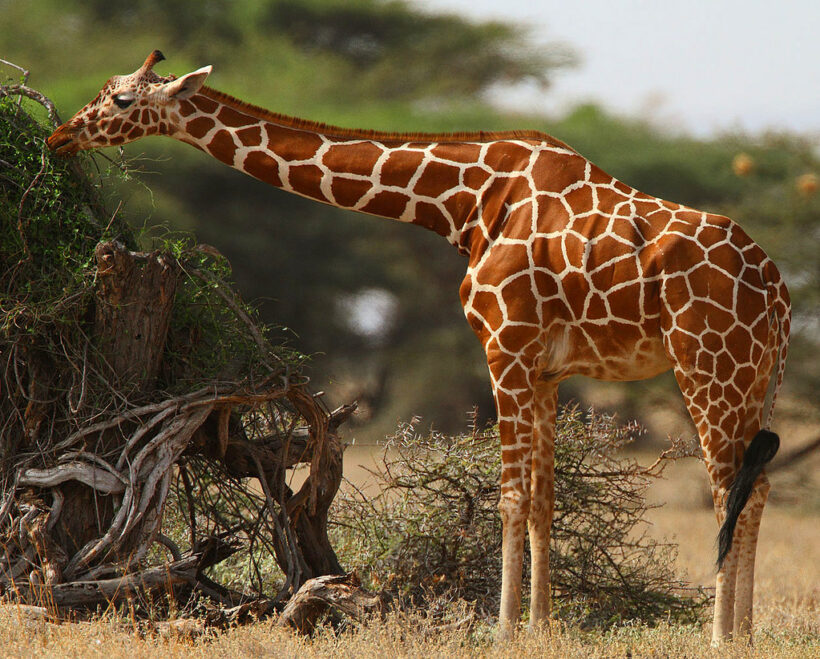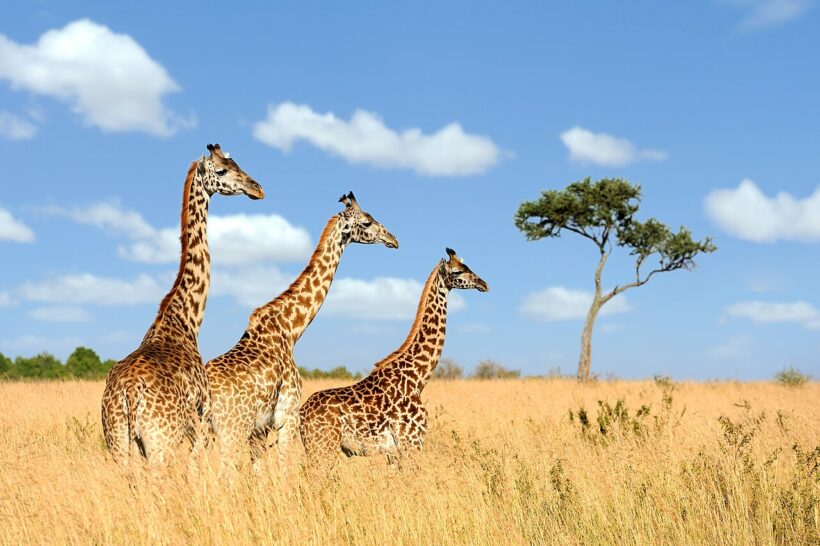by: Assaf Levy, BioDB
Every year on June 21st, the world comes together to celebrate World Giraffe Day. This isn’t just a day to marvel at their lanky frames and gentle nature; it’s a crucial reminder of the challenges these gentle giants face and the importance of giraffe conservation. Giraffes are a keystone species, playing a vital role in maintaining healthy ecosystems. Their browsing habits help control tree populations, allowing sunlight to reach the understory and promoting plant diversity.
The Diversity of Giraffe Species
There are four distinct species of giraffes: the Masai giraffe, the Northern giraffe, the Reticulated
giraffe, and the Southern giraffe. Each species has unique characteristics and inhabits different
regions of Africa.
The Masai giraffe, also known as the Kilimanjaro giraffe, is the tallest of the giraffe species, easily recognizable by its irregular, jagged spots. Found predominantly in central and southern Kenya and Tanzania, this species thrives in savannahs and woodlands. The current population of Masai giraffes is estimated to be around 35,000 individuals, but they are classified as endangered due to habitat loss and poaching.

Flickr Ray in Manila
The Northern giraffe, comprising three subspecies – the Kordofan, Nubian, and West African giraffes – is one of the most critically endangered giraffe species. These giraffes inhabit areas in Chad, South Sudan, Uganda, Kenya, and Cameroon. The Northern giraffe has a total population of approximately 5,000 individuals, with the Nubian giraffe being the most at risk. Their coat patterns are more blotchy compared to other species, and each subspecies has slight variations in their spot patterns.

Credits: Pexels
The Reticulated giraffe, or Somali giraffe, is known for its striking, net-like coat pattern with defined white lines separating the dark patches. This species is found mainly in northern Kenya, southern Ethiopia, and Somalia. With an estimated population of around 16,000 individuals, the Reticulated giraffe is listed as endangered. Their distinct coat makes them a favorite among safari-goers, contributing to their popularity and the efforts to protect them.

Flickr | Steve Garvie
The Southern giraffe, which includes the Angolan and South African subspecies, roams the savannahs of Namibia, Botswana, Zimbabwe, Zambia, and South Africa. This species has the healthiest population, with approximately 52,000 individuals. The Southern giraffe is recognized by its star-shaped patches, which are less defined than those of the Reticulated giraffe. Despite their relatively stable numbers, they still face threats from habitat loss and human activities.

Flickr | Bernard DUPONT
Despite their differences, all giraffes share some remarkable adaptations. Their long necks, a result of elongated vertebrae rather than extra bones grant them access to leaves unavailable to other herbivores. Their powerful hearts pump blood against gravity to deliver oxygen to their brains. Their long, prehensile tongues, capable of extending up to 46 cm (18 inches), are perfectly suited for plucking leaves. And despite their size, they can run surprisingly fast, reaching speeds of up to 56 km/h (35 mph) in short bursts.
Giraffes face numerous threats in the wild, primarily from human activities. Habitat destruction due to agricultural expansion, deforestation, and infrastructure development significantly reduces their living space. Poaching for bushmeat and traditional medicine also poses a serious threat, particularly in regions where law enforcement is weak.
Climate change adds another layer of difficulty, affecting the availability of food and water resources. As giraffes rely heavily on specific trees and shrubs for sustenance, changes in weather patterns can disrupt their feeding habits and migration routes.
Conservation programs are crucial in addressing these challenges and ensuring the survival of giraffes. Various organizations, such as the Giraffe Conservation Foundation (GCF), work tirelessly to protect giraffes through research, habitat restoration, and anti-poaching efforts.
These programs involve local communities in conservation activities, promoting sustainable land-use practices and raising awareness about the importance of giraffes in ecosystems.
One notable success story is the establishment of giraffe conservation areas and translocation projects, where giraffes are moved from high-risk areas to safer, protected regions. These initiatives have helped stabilize certain populations and reintroduce giraffes to areas where they had previously disappeared.
A Call to Action
On World Giraffe Day, let’s stand tall for giraffes, just like they do in the wild. By speaking up and taking action, we can ensure that future generations will still be able to marvel at these gentle giants roaming freely across Africa’s vast landscapes. Together, we can make a real difference and help giraffes continue to thrive.






